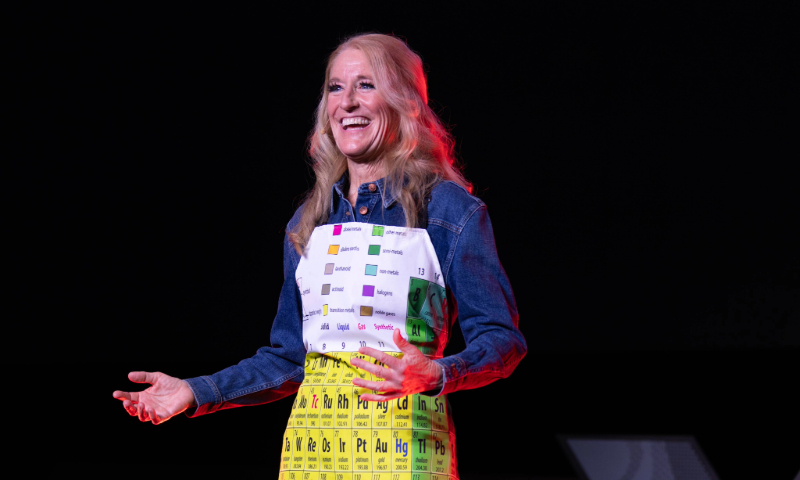Creating fun and accessible chemistry stories has been a labor of love for Colleen as a retired University of Arizona chemistry professor and author of a series of kids’ chemistry comic books. In 2023, the PBS short documentary, “Comic Book Chemistry,” was awarded an Emmy. This documentary centered around Colleen’s vision, chemistry comic book series and her success with teaching college-level chemistry concepts to kids. This vision was then presented as a TEDx talk, “Molecular Literacy for Ages 8 – 108,” in 2025. During Colleen’s 30 years of teaching chemistry, she became aware that her students were struggling with basic concepts, including fluency with the symbols for the elements themselves. These comic books, videos, and activities are Colleen’s gift to all future scientists – one that will help them succeed in college chemistry.
For decades, chemistry has been considered a “gatekeeper” course within STEM education, with nearly 50% of college students failing, withdrawing, or dropping introductory chemistry courses (ACS, 2020). This phenomenon creates a significant barrier for students pursuing degrees in over 50 STEM-related disciplines, thereby restricting access to critical career pathways in science, medicine, and technology. Despite numerous curricular reforms, traditional approaches continue to present chemistry as abstract, content-heavy, and disconnected from students’ lived experiences.
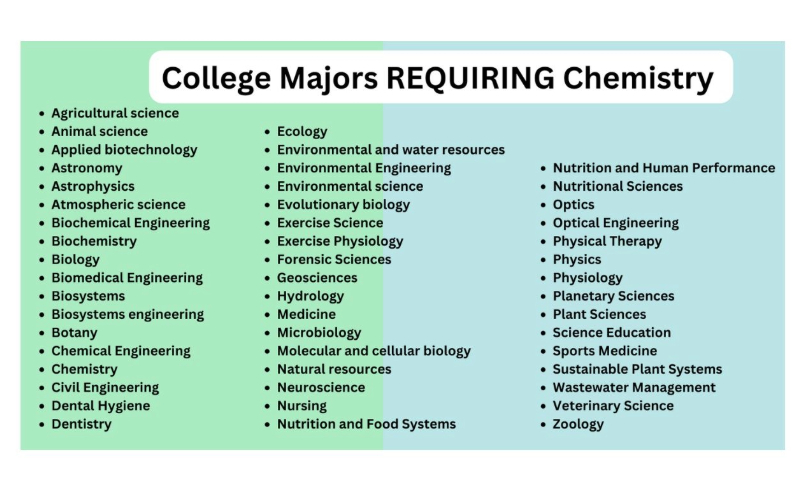
This article proposes a paradigm shift: Molecular Literacy, defined as the ability to understand, interpret, and apply molecular concepts to real-world contexts. By reimagining chemistry education through the lens of literacy development, we can cultivate learners who are not only proficient in chemical knowledge but also capable of engaging with molecular phenomena in ways that are meaningful, relevant, and empowering.
The Case for Molecular Literacy
Students entering college are, for the most part, molecularly illiterate. They lack the foundational skills to decode the symbolic language of chemistry, such as chemical formulas, structural representations, and reaction mechanisms. This challenge mirrors what would occur if students were expected to read novels without first mastering the alphabet. Delaying exposure to chemistry concepts until high school or college exacerbates the problem, as it compresses years of conceptual development into a single academic year, often resulting in cognitive overload and high attrition.
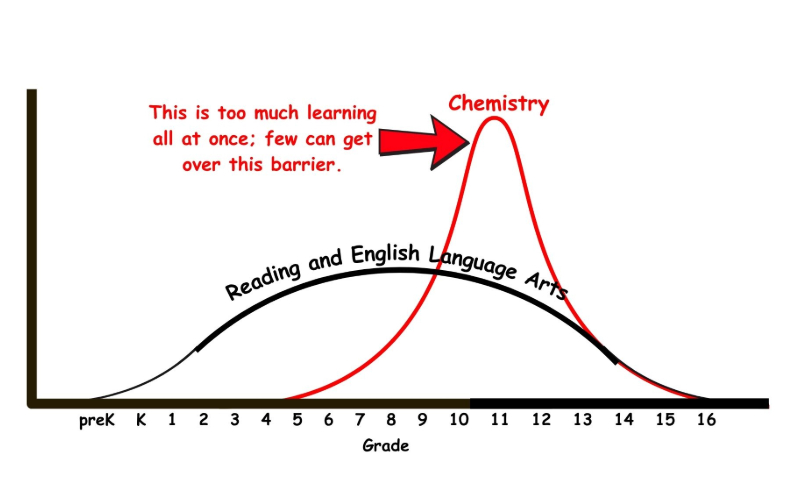
While reading literacy is nurtured from early childhood through structured, incremental exposure to language, chemical literacy is postponed until adolescence, missing the window of optimal neuroplasticity for symbolic learning (Goswami, 2008).
Molecular Literacy as an Educational Model
Definition and Framework
Molecular Literacy is an approach to chemistry education that parallels reading instruction in its structure and progression. Just as phonemic awareness, decoding, and fluency form the building blocks of reading, molecular literacy begins with recognizing elemental symbols and progresses toward understanding compound formation, reaction patterns, and molecular behavior.
Key principles include:
Early Introduction: Begin foundational chemical concepts during elementary school, when cognitive flexibility supports symbolic learning.
Incremental Complexity: Scaffold instruction, introducing simple symbolic representations before progressing to abstract chemical processes.
Multimodal Engagement: Employ visual, auditory, and kinesthetic tools to enhance retention and comprehension.
The Alphabet of Science: The Periodic Table
The Periodic Table serves as the “alphabet” of chemistry. Early exposure to elemental symbols and properties mirrors the introduction of letters in early reading curricula. Activities such as sorting, matching, and pattern recognition can lay the groundwork for understanding chemical relationships, akin to phonics instruction in language learning.
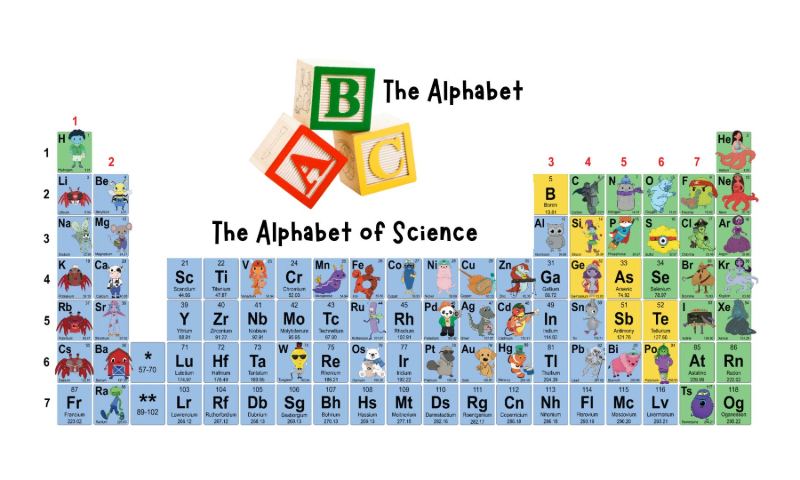
Pedagogical Strategies for Molecular Literacy
Early Exposure and Play-Based Learning
Introducing chemistry concepts to children as early as age eight can leverage curiosity and reduce anxiety associated with the subject. Play-based strategies—such as Periodic Table Twister, storytelling with anthropomorphized elements, and construction sets for building chemical formulas—transform abstract ideas into concrete, enjoyable experiences.
Storytelling and Media Integration
Narrative-based instruction enhances engagement and cognitive retention. For example, stories featuring characters like “Poppi” (Polonium) and “Ray” (Radium) provide a narrative framework for understanding elemental properties and interactions (Mullen Davis, 2023). This technique aligns with dual-coding theory, which posits that combining verbal and visual information enhances learning (Paivio, 1991).
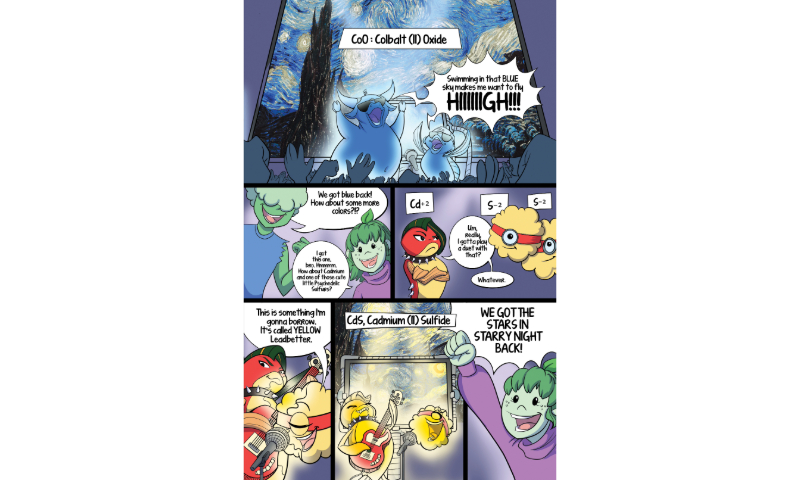
Music and Mnemonics
Songs adapted from familiar tunes (e.g., “Sweet Calcium” to the melody of “Sweet Caroline”) facilitate memorization of elemental properties and compound structures. Such approaches capitalize on rhythm and repetition to reinforce symbolic associations, similar to alphabet songs in early literacy education.
Evidence of Efficacy
Preliminary research suggests that integrating literacy-based strategies into chemistry instruction improves conceptual understanding and reduces cognitive load (Kelley, 2023). Pilot studies implementing storytelling, interactive games, and media-based resources report increased student engagement and performance on assessments of symbolic interpretation. Furthermore, longitudinal studies are underway to examine the long-term impact of early exposure on success in secondary and post-secondary chemistry courses.
Implications for Practice
The adoption of Molecular Literacy necessitates systemic changes in curriculum design, teacher training, and resource development. Key recommendations include:
Curricular Integration: Embed molecular concepts into elementary science curricula through cross-disciplinary connections with language arts and art education.
Professional Development: Equip educators with the tools and strategies required to implement literacy-based approaches effectively.
Resource Innovation: Develop age-appropriate games, storybooks, and digital platforms to support sustained engagement.
Conclusion
Chemistry is more than a scientific discipline; it is the shared story of matter, life, and connection. By fostering Molecular Literacy from an early age, educators can demystify chemistry, reduce failure rates, and empower learners to navigate a world increasingly shaped by science. This vision transforms chemistry from a “weed-out” course into an accessible, engaging, and essential component of lifelong learning. As with reading, literacy in the molecular language is not optional—it is foundational for informed citizenship and global collaboration.
References
- American Chemical Society (ACS). (2020). Freshman chemistry as an exit point for underrepresented students. Retrieved from https://cen.acs.org/education/undergraduate-education/Freshman-chemistry-exit-point-underrepresented/98/i23
- Goswami, U. (2008). Cognitive development: The learning brain. Psychology Press.
- Paivio, A. (1991). Dual coding theory: Retrospect and current status. Canadian Journal of Psychology, 45(3), 255–287.
- Kelley, C. (2023). Mission Molecular Literacy: Strategies for Early Chemistry Education. [Manuscript in preparation].
- Mullen Davis, M., Allen, K. (2023) Writing children’s books to increase engagement in non-major introductory chemistry courses. Journal of Chemical Education, (100), 2446 – 2450




